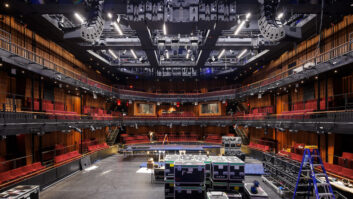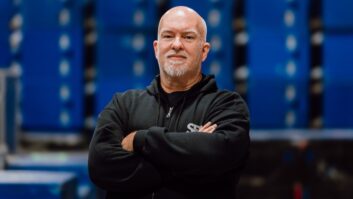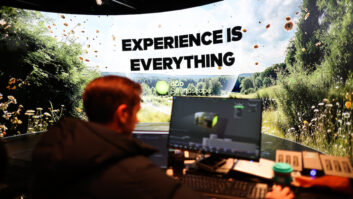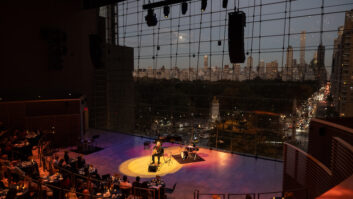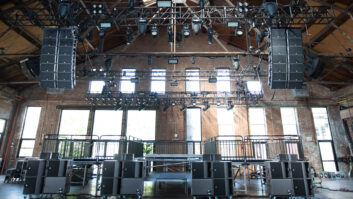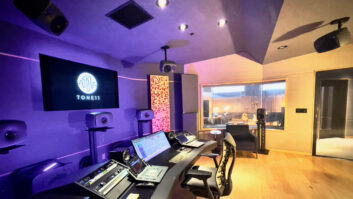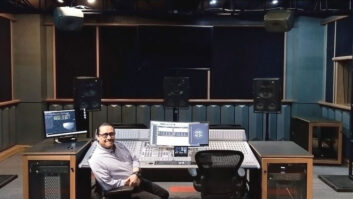FiberPlex’s LightViper™ VIS-4832 fiber-optic all-digital audio transport system has been deployed for use in Silicon Valley’s San Jose Center for the Performing Arts (California, www.sjcc.com/cftpa/index.html). The 2,665-seat theater, designed by the Frank Lloyd Wright Foundation, hosts numerous events—from ballet to music-only concerts, boxing championships to videogame developer’s conferences.
Because of an eclectic mix of continuous public events with widely varying needs for audio reinforcement, a portable, yet state-of-the-art sound system with fiber-optic digital audio and control technology was recently specified by Richard “Woody” Woodward, principal of Kari Productions. Kari, the Performing Arts Center’s house sound music production provider, worked with South San Francisco firm Hi-Tech Audio (www.hi-techaudio.com) to configure the unique system.
Woodard, principal of Kari Productions and front-of-house engineer for many of the center’s music productions, was enthusiastic about his experience with the LightViper fiber-optic transport system. “I am tremendously impressed with how well the LightViper performs; it’s just awesome! My fiber cable runs approximately 300 feet for a typical show setup to the orchestra area from front-of-house position in the rear of the auditorium. One of the great benefits with this LightViper system is that I now have full control of up to 64 stage mic preamps from the console. Just this aspect alone saves me lots of valuable time, not to mention the faster setup you inherently have with a full multichannel audio cable run that’s smaller in diameter than my little finger! It’s so much easier now to deal with the tight setups that are typical at the center.
“My LightViper system replaced a conventional copper audio snake and more,” he continues. “It’s been ultra-reliable and well worth the investment. I can’t begin to tell you how much easier my life is now. It saves me from a lot of headaches on every gig.”
The custom AES all-digital LightViper audio transport system at Kari Productions features eight Yamaha digitally controlled mic preamplifiers mounted in two compact, roll-around electronics rack. Each AD8HR mic pre can handle up to eight mic inputs for a total system input configuration of 64 mic channels. From these devices, normal analog audio is then fed to a pair of LightViper VIS-4832 “head end” stage units (also mounted in the same electronics racks), which converts the signals to multiplexed digital audio.
In addition to taking the inputs from the mic pre’s, the VIS-4832 sends RS-422 control signal data to the mic pre’s (this control generated at the FOH console position). The control signal at the stage end is simply “daisy-chained” to all eight 1U rack preamps. The digital audio and bi-directional control data for controlling the mic preamps is sent back to FOH (and to monitor splits when required) from the remote stage rack down a single multimode, four-fiber tactical-grade fiber-optic cable furnished with the LightViper system. The “primary” fiber-optic cable is routed on a perimeter run to the FOH position in the left rear of the large auditorium. Each VIS4832 features up to three signal splits.
At the typical FOH position in the San Jose Center, a Yamaha PM5D digital console handles the mixing and audio control. The primary fiber-optic cable run terminates into a pair of LightViper VIM-1832 FOH units that, in turn, feed the optional “recallable head amps” (MY16AE 96 AES interface cards) installed in the PM5D console. The console generates an RS422 control signal (as well as 48kHz word clock to the entire system) that are fed into the local VIS-1832 units for the bi-directional control data sent via the LightViper system to the remote stage electronics racks described earlier.
For more information on the LightViper system, visit www.lightviper.com.
